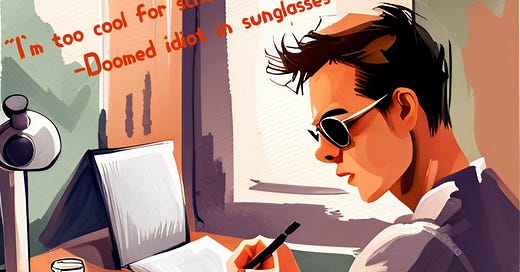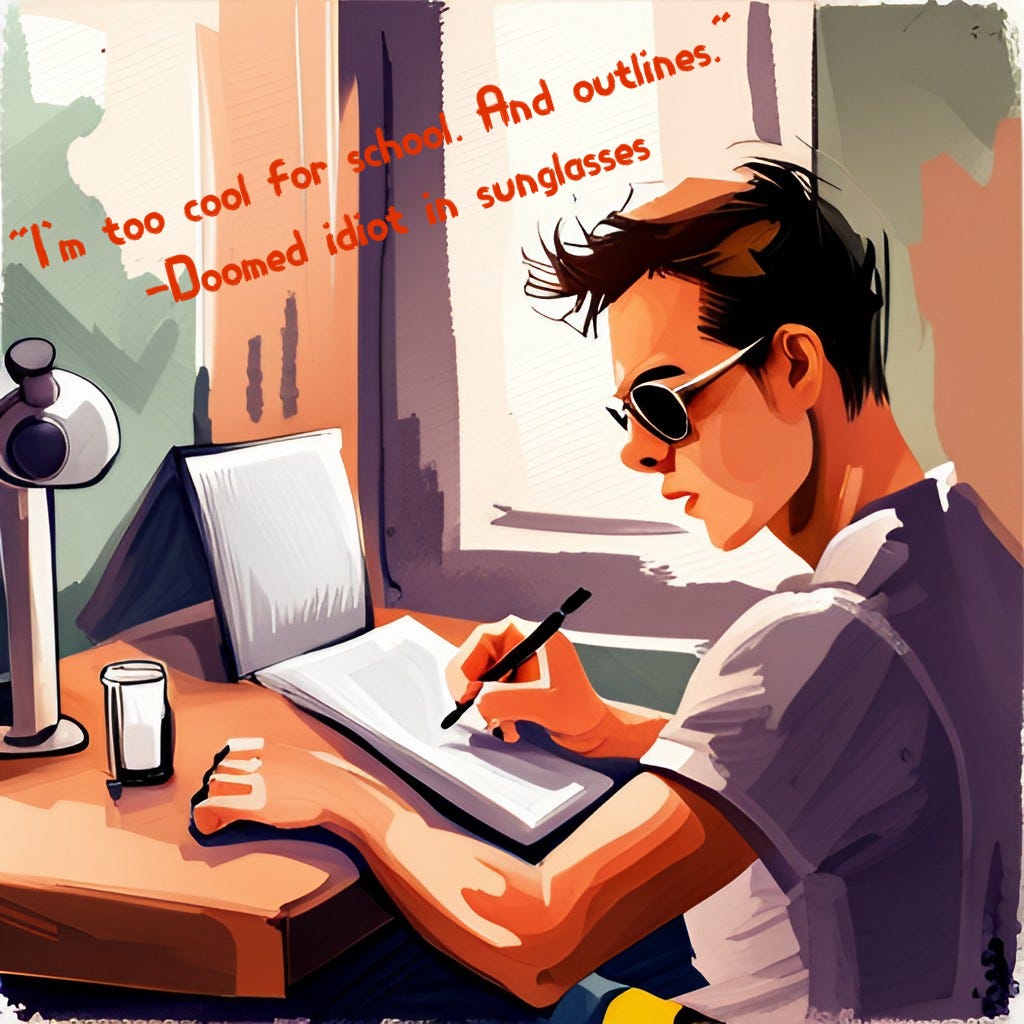The undeniable usefulness of outlining
And why confidence is both wonderful, and wonderfully stupid
Confidence is a great thing—most of the time.
Confidence will help you nail an interview, ask someone out, do something that scares you, or give you that nudge to try ordering the "category 5" spice level next time you're out.
Confidence will also give you the energy to start writing an entire article, sans outline, that's destined to fall apart before you reach the conclusion.
In short: confidence is kind of a double-edged pain in the ass.
I vividly recall the first time I wrote myself right into a corner. I was so confident in the direction the article was going. And then it happened:
I hit the last 1/4 of the article and realized I had written a piece that didn't answer the question asked by the brief. And the conclusion wasn't happening. And I was running out of time before the deadline. And I'd ordered the spicy beef and broccoli at lunch. (Damn you, confidence.)
There was only one solution: reread the brief, properly outline the piece, and take some Rolaids.
Outlines: Now 60% effective at preventing rewrites
Rewrites happen. You write something, your editor or one of the many cooks in the kitchen has thoughts, the brand has last minute changes, and you have to tweak sentences or paragraphs or the entire article.
Rewrites are simply a part of the business. But few things are worse than having to rewrite an entire article because you—yes, you—didn't map out the piece ahead of time.
It’s one thing to have an unplanned detour or road closure. It’s another thing to arrive late on account of ignoring your map.
“But outlining is such a waste of time, Jooooohn.”
I get it. I used to hate outlining. I thought I was cool for going Kerouac on a piece. That might work for a last minute creative writing assignment. Or Kerouac. It doesn't work so well when you're tasked with creating a 5,000 word ebook on streamlining a component of the healthcare revenue cycle.
Love it or hate it, outlining is crucial to writing well, writing quickly, and thriving as a professional writer. Especially with the expected outputs most writers face today.
Your outline to outline success
While outlining can save you additional heartache, it’s also intimidating. When you’re starting an outline, you're asking yourself if you understand the subject or brief enough to lay out the foundation of the piece—that's a big deal!
Fear not, naysayer of outlines. There are a couple tricks I use that make the outlining process more wieldy and less stressful.
1. Throw a placeholder title down (Unless you have a real title ready to go, you little overachiever)
2. Write a rough, bulleted intro that calls out the problem or topic you're addressing, along with the solution or information you're promising
3. Set your text size to Header 2
4. Write a header that starts the conversation promised by the intro
5. Add bullets with supporting points (or add filler copy if you’re not ready)
6. Repeat until you hit the conclusion
Outlines don't have to be in-depth, extravagant works of art to be useful. This rough, pre-outline approach gives you a bird's-eye view of the piece and allows you to at least determine if the structure makes sense.
Put yourself in the shoes of the reader. What’s their intent for reading this piece? Are they coming to this piece to learn some 101-level information about a topic? Or are they looking for a product to solve their problem?
Next, read the intro bullets and the headers you've jotted down and ask yourself if the article walks the reader through the topic in a logical way. Is something missing? Or out of order? This early outline stage is a perfect time to move things around without the headache of shifting supporting copy, too.
Reminder that you’re still cool
Everyone wants to think they can open a blank doc or turn to an empty page, take a swig of whisky or coffee, and bang out a work of art. And maybe you can!
Hell, I wrote this email in one pass—without outlining—while sipping spiked hot chocolate.
Alright, all of that is a lie. I mapped it out, for the most part, and took my time drafting it. The same is true for any client piece I tackle.
Sure, you could have a gift and write final drafts your first pass without outlining a word. You might also have latent abilities allowing you to eat steel. But is finding out really worth the risk?
Outlines might feel like a waste of time, especially when you’re pushing a deadline and in a panic. If you’re looking to save time, microwave your water instead of putting a pot on the stove. But don’t cut the outline.
Put yourself in your reader’s shoes, absorb any provided documents and research from your client, and outline the piece from beginning to end. Even if you have tons of filler text (I’m partial to “yada, yada, yada”), you still have the advantage of knowing whether your overall article flow works or not—and all before it ever reaches an editor.
That’s pretty freaking cool.




